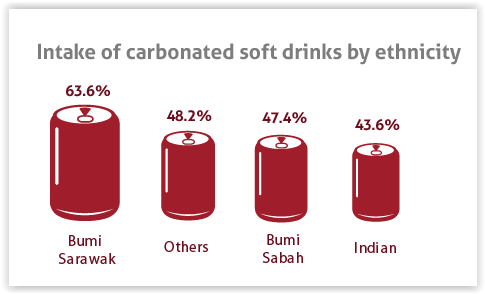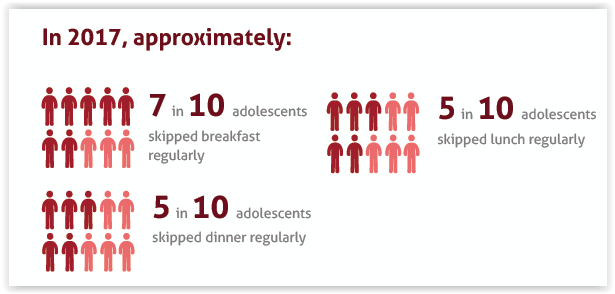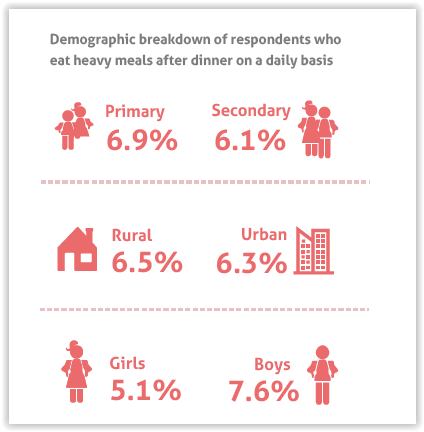KUALA LUMPUR, Nov 21 — Thirty-six per cent of Malaysian adolescents consume carbonated soft drinks at least once a day, according to a newly released Health Ministry survey.
The National Health and Morbidity Survey (NHMS) 2017: Key Findings from the Adolescent Health and Nutrition Surveys found that 41 per cent of Malaysian teens living in rural areas drank carbonated soft drinks, higher than their urban counterparts at 34 per cent.
Four out of 10 teenage boys consumed carbonated soft drinks, compared to 32 per cent of girls, according to the survey on Malaysian school students aged 10 to 17.

Lower secondary school students consumed carbonated soft drinks more frequently at 40 per cent, compared to 32 per cent at the upper secondary school level.
Bumiputera Sarawakian adolescents had the highest intake of carbonated soft drinks at 63.6 per cent, followed by others (48.2 per cent), Bumiputera Sabah (47.4 per cent), and Indians (43.6 per cent).
Sugar intake in Malaysian adolescents increased by 1.4 times from 2012 at 29.5g to 40.7g in 2017.
70% Of Teens Skip Breakfast

According to the NHMS, seven in 10 Malaysian adolescents skipped breakfast regularly, with 32 per cent saying it was because they had no time.
Half of teens surveyed reported skipping lunch or dinner regularly.
Almost one in 10, or 9 per cent, of adolescents skipped breakfast because “no food was available”, while 44 per cent did not eat breakfast because they had no appetite. A total of 74 per cent of obese teens skipped breakfast.
The NHMS reported that 31 per cent of teens ate no main meals in a day, while 27 per cent consumed two main meals in a day, followed by 24 per cent who ate one main meal a day. Only 18 per cent ate three main meals a day.
Less Than Half Of Adolescents Are Physically Active

The NHMS found that 45 per cent of Malaysian school students were physically active, with boys reporting higher physical activity at 54.1 per cent than girls at 35.2 per cent.
Almost six of 10, or 57 per cent, of primary school students were physically active, higher than 37.3 per cent of their secondary school counterparts.
Prevalence of physical activity was slightly higher among rural school children at 46.4 per cent than in the cities at 43.2 per cent.
Physical activity prevalence was somewhat similar across Malaysian adolescents at 43.4 per cent among thin people, normal (44.9 per cent), overweight (43.5 per cent), and obese (44.7 per cent).
Inactive students reported greater screen time at 57 per cent during schooling days and 54.4 per cent during weekends, compared to active teens at 43 per cent and 45.6 per cent respectively. Screen time was defined as time spent on watching TV, playing video games and using the computer, or going online.
Most Teens Eat Poor Diets

According to the NHMS, 92 per cent of Malaysian adolescents did not eat enough vegetables daily. Eighty per cent did not eat enough fish, 75 per cent ate inadequate milk and dairy products, two-thirds ate inadequate fruits, and half of them ate inadequate legumes daily.
One-third of teens ate inadequate cereals, grains, tubers or related products, while a quarter of respondents reported eating excessive poultry, meat, and eggs daily.
The NHMS reported a 70.4 per cent national prevalence of Malaysian adolescents eating heavy meals after dinner one to six days a week. Almost a quarter did not take such heavy meals, or 23.2 per cent, while 6.4 per cent reported eating heavy meals after dinner every day.
Heavy meals were defined as meals taken after 10pm consisting of high-calorie food like nasi lemak, roti canai, fried noodles, burgers, and fried chicken. It does not include light snacks like two biscuits and a glass of milk.
Slightly more teenage boys ate heavy meals after dinner on a daily basis at 7.6 per cent, compared to 5.1 per cent of girls.
About half, or 51 per cent, of Malaysian adolescents reported reading food labels sometimes, while a third said they always read food labels, and 16 per cent reported never doing so.
The most common information read on food labels by teens was the expiry date at 78.6 per cent, followed by food ingredients (28.7 per cent), nutrition facts (24.8 per cent), storage instructions (18.2 per cent), and nutrition claims (17.3 per cent).
School Children Top Consumers Of Dietary Supplements
The NHMS reported that school children aged 10 to 12 consumed the most dietary supplements.
Every two in five and one-third of Malaysian adolescents consumed vitamins/ minerals and food supplements respectively.
The most common dietary supplements consumed were vitamin C and honey, with the main reason of teens taking such supplements due to their parents’ advice.
Putrajaya recorded the highest prevalence of dietary supplement users.
The NHMS on nutrition was conducted in 2017 among Malaysians aged 10 to 17 via face-to-face interviews and anonymous questionnaires that were distributed among 40,087 students from 212 randomly selected secondary schools and 99 primary schools, with an 89.5 per cent response rate.








